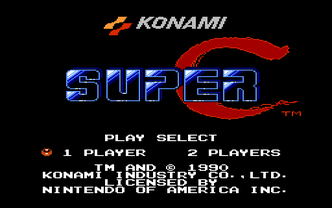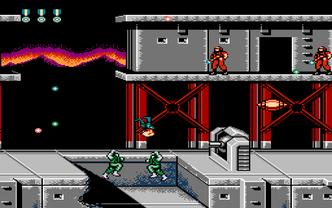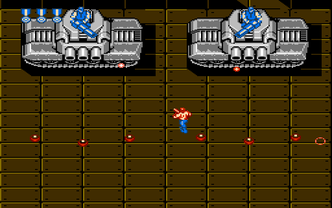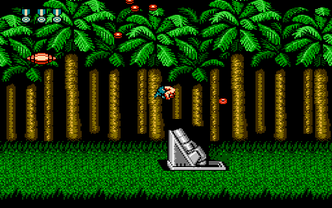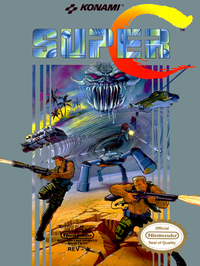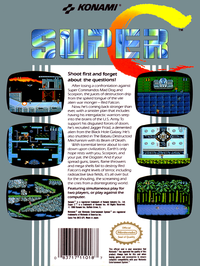Navigation:
Super C Nintendo
A home version of Super Contra was released for the Nintendo Entertainment System on February 2, 1990 in Japan and in April, 1990 in North America, where it was retitled Super C. A PAL version of the NES game, titled Probotector II: Return of the Evil Forces, was released in 1992.
The gameplay and graphics of Super C are similar to the port of the first Contra game. There are three stages unique to the NES version: a high-tech base, a mountain and an alien nest, all vertically-scrolling stages. The order of the latter stages and bosses are also slightly different, with new bosses featured in this version (including a new final boss). The NES version uses the same power-ups as the original NES game, but changes the function of the "fire ball" power-up from a gun that fires small fireballs that travel in a corkscrew pattern to a large projectile that spreads fire after hitting its target. The player can charge this gun by holding down the B button and then releasing it, shooting an even larger projectile that passes through most fodder enemies and causes an even bigger explosion (with 8 sparks) when it hits a large target. The Rapid Bullets, Barrier and Special power-ups from the first NES game are also included in this game.
The Konami Code from the original Contra was not included in this game. A different code was added which gives out thirty lives in the Famicom version and ten lives in the NES versions. Like in the Famicom version of Contra, the Japanese Super Contra has a stage select code that was removed from its NES counterparts. All three versions contain a sound test mode. Like the first NES game, Probotector II (the PAL version), replaced the main characters and some of the enemies with robots.
The original arcade soundtrack was rearranged for the Japanese and North American versions by Hidenori Maezawa. Because the soundtrack used DPCM samples of orchestra hits, Yuichi Sakakura altered the sound driver for Probotector II to avoid playing the samples out of tune (a common occurrence in previous NTSC-to-PAL conversions).
